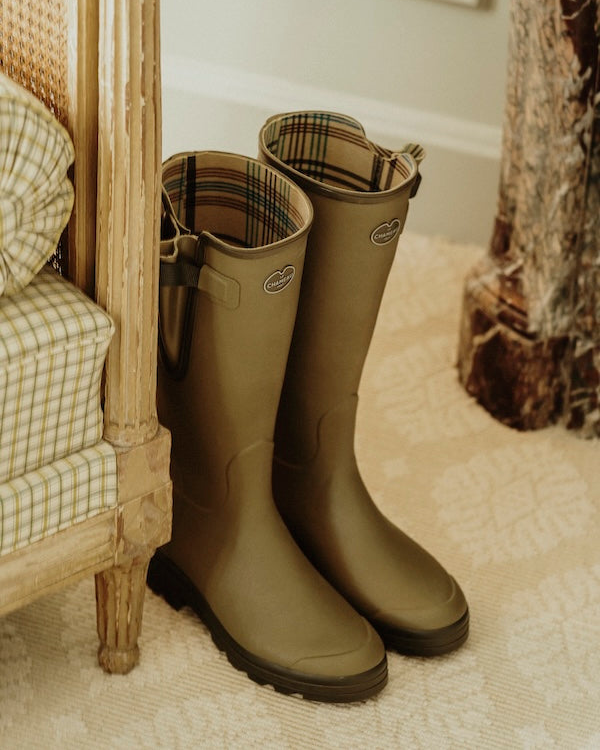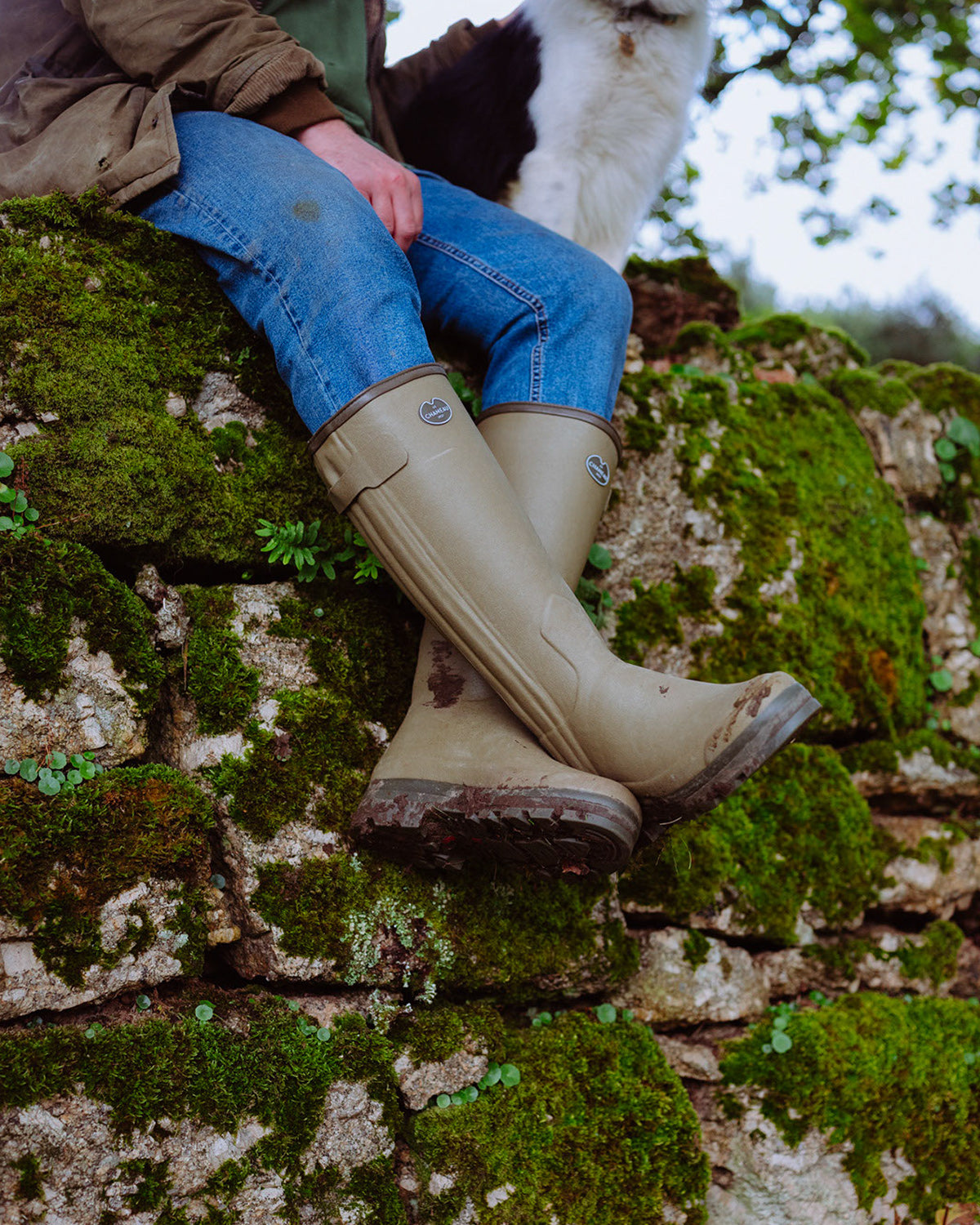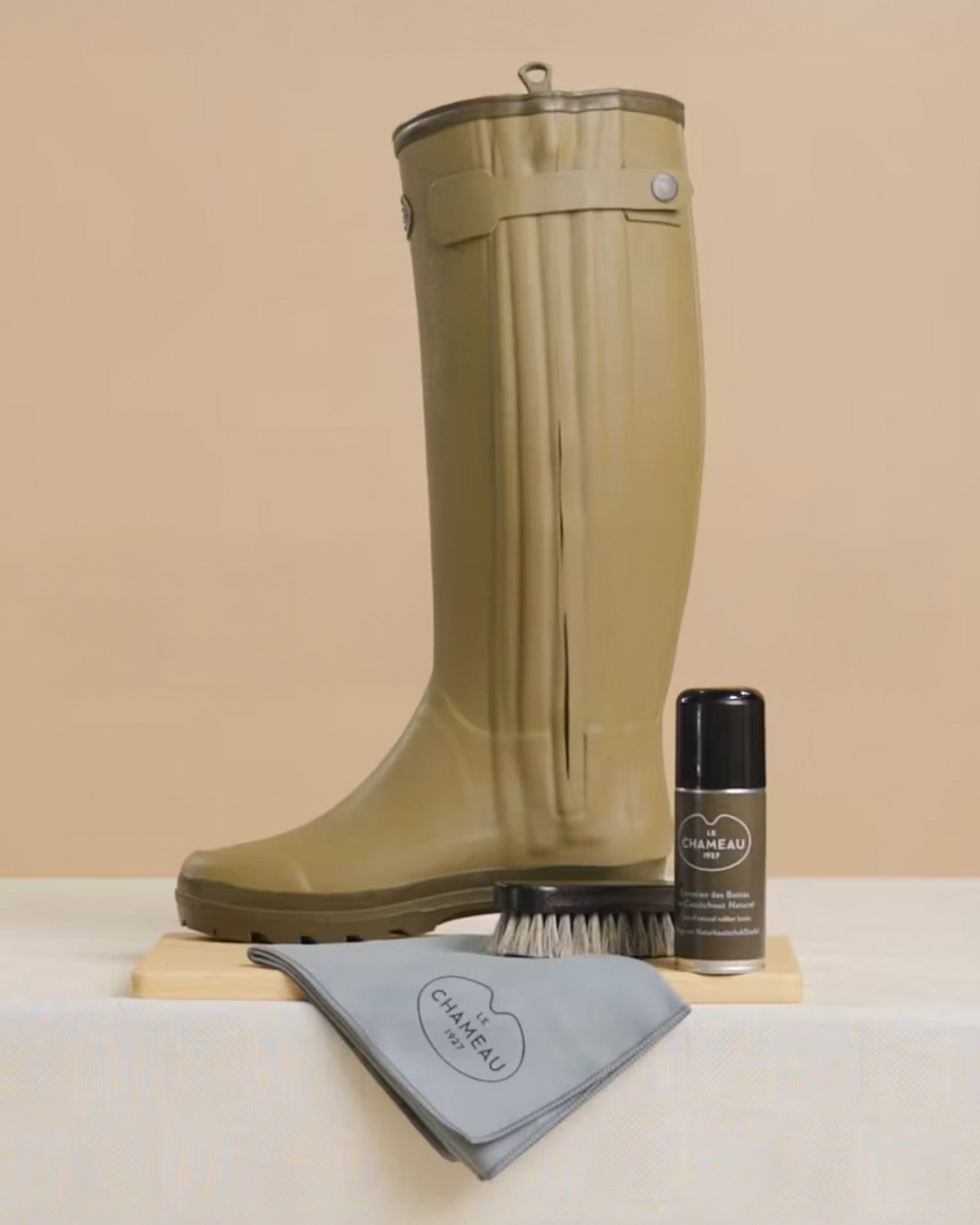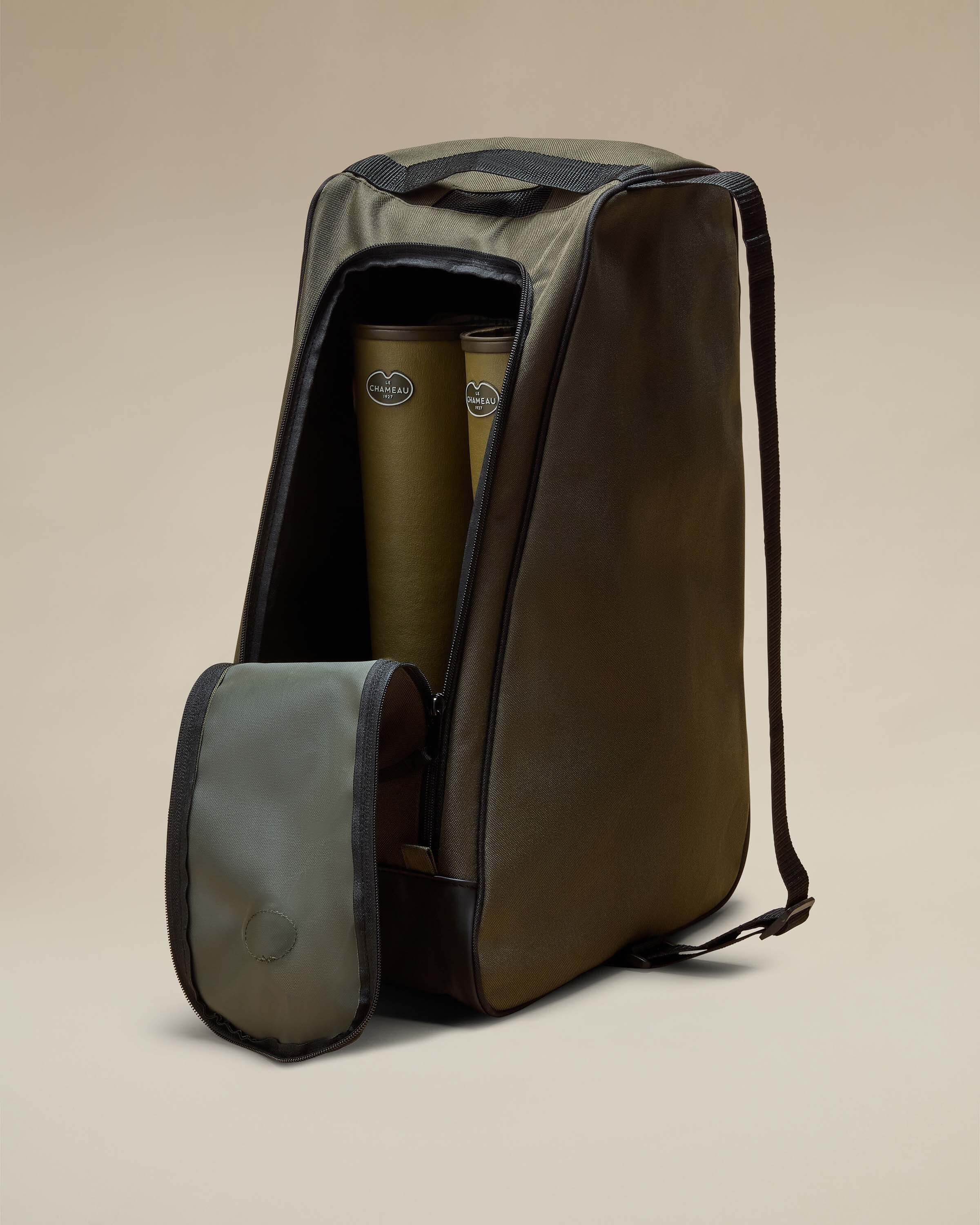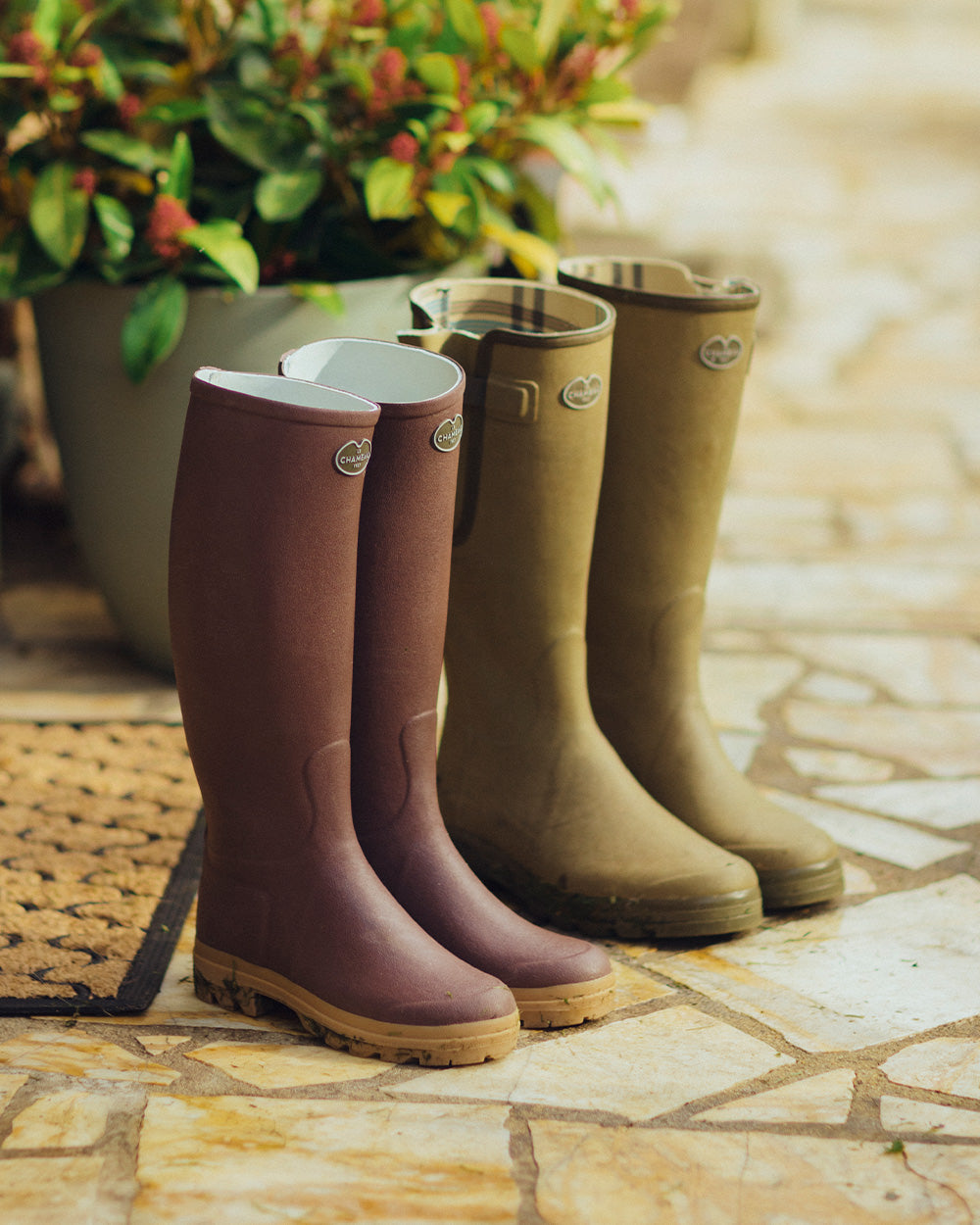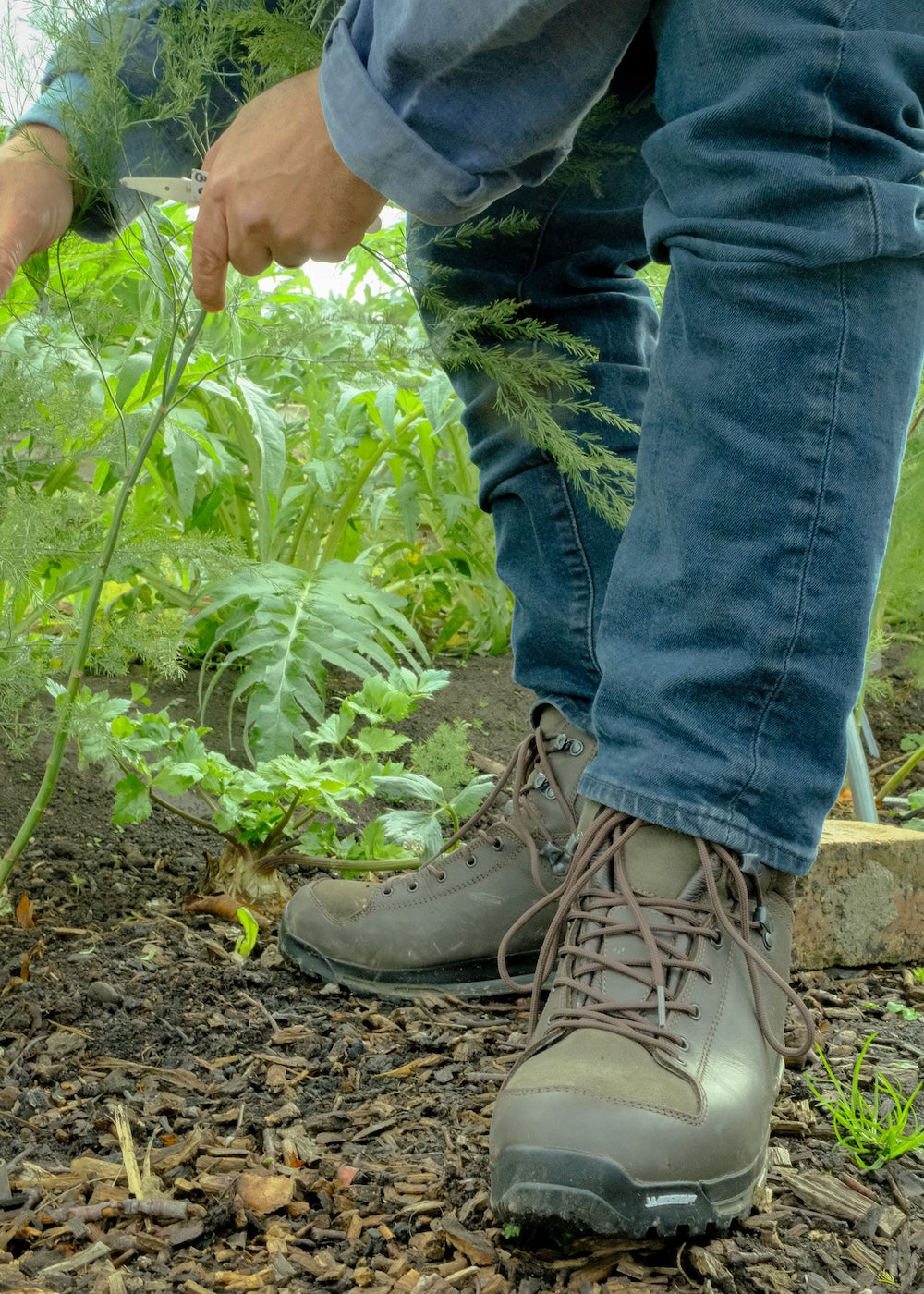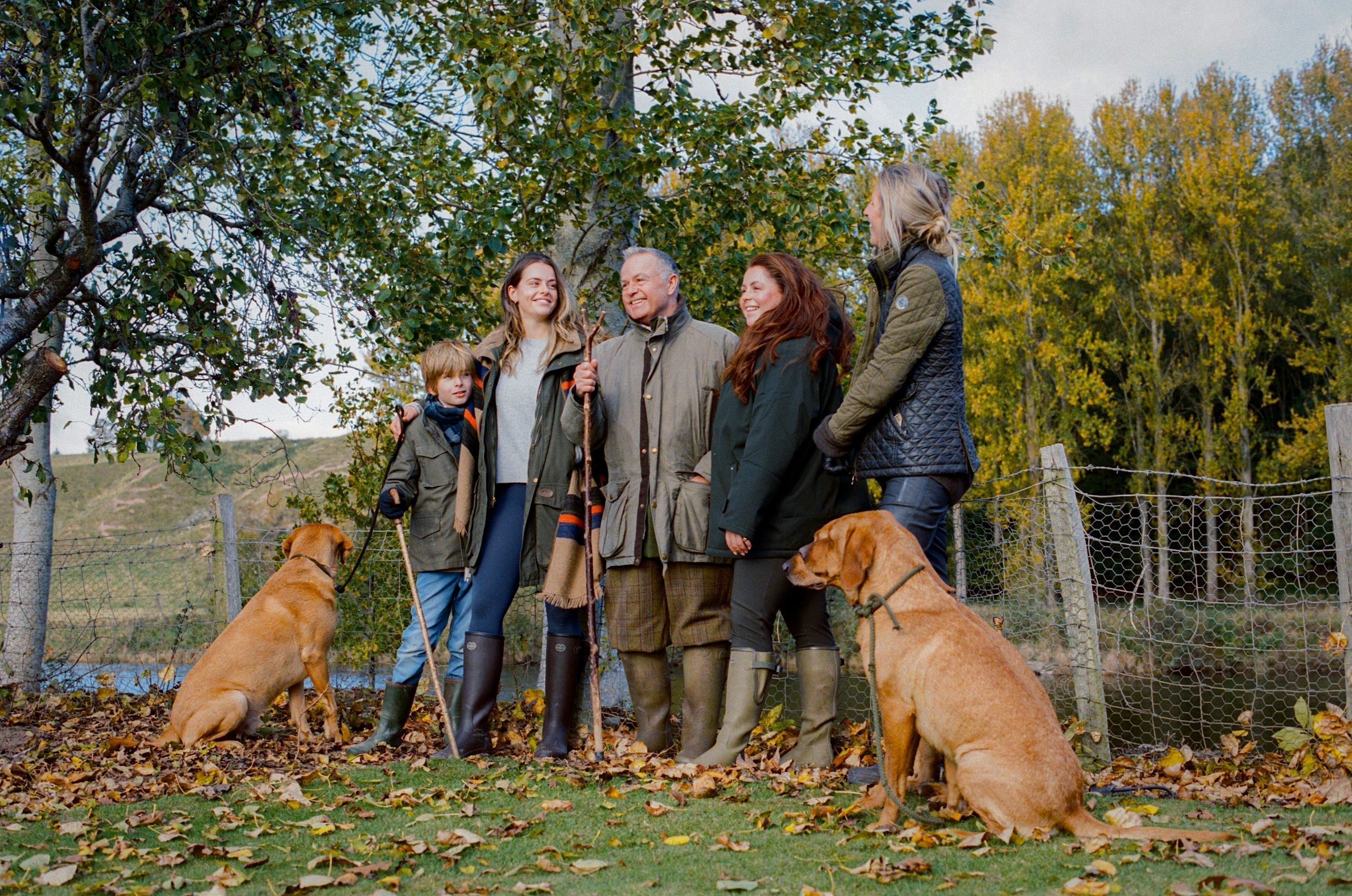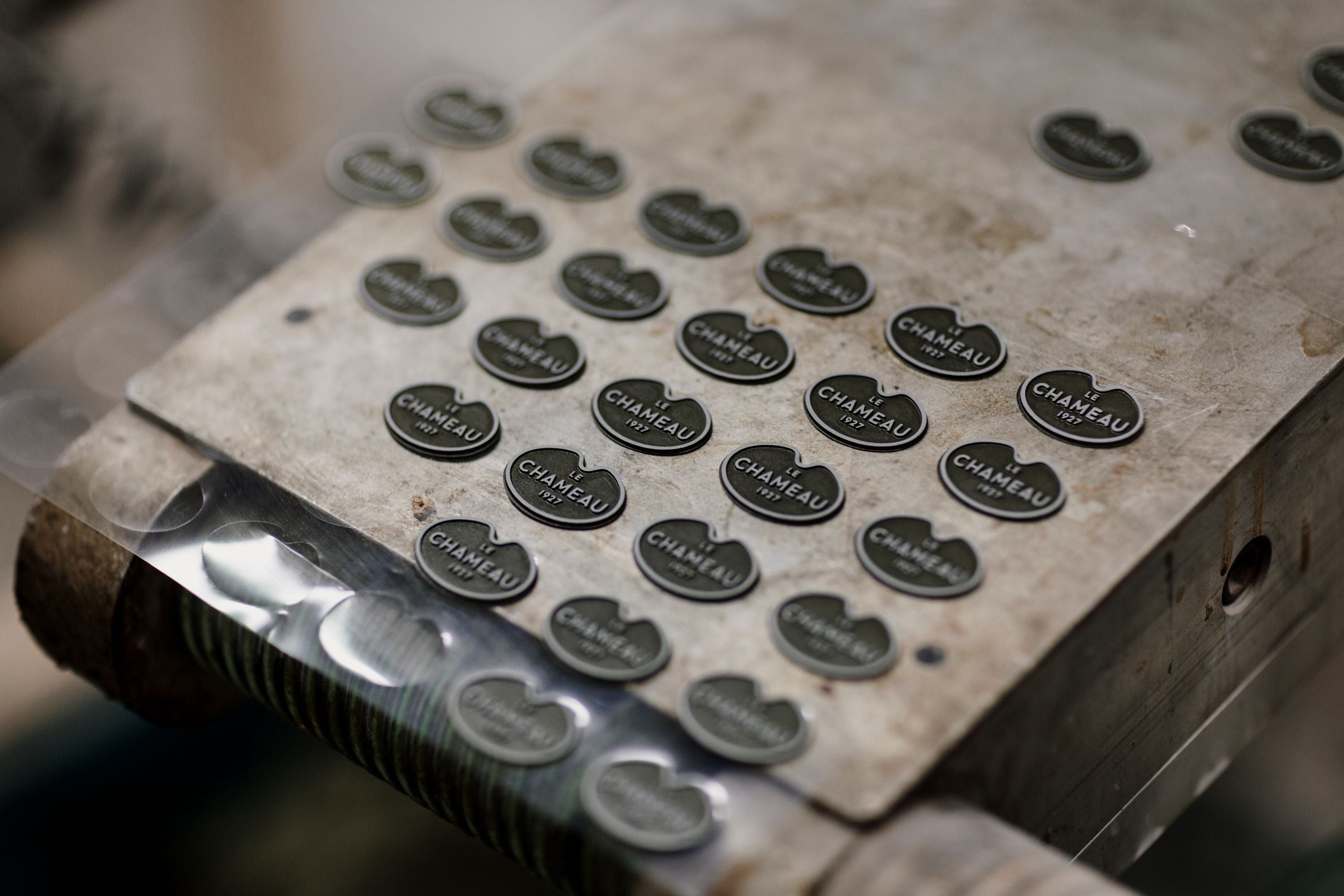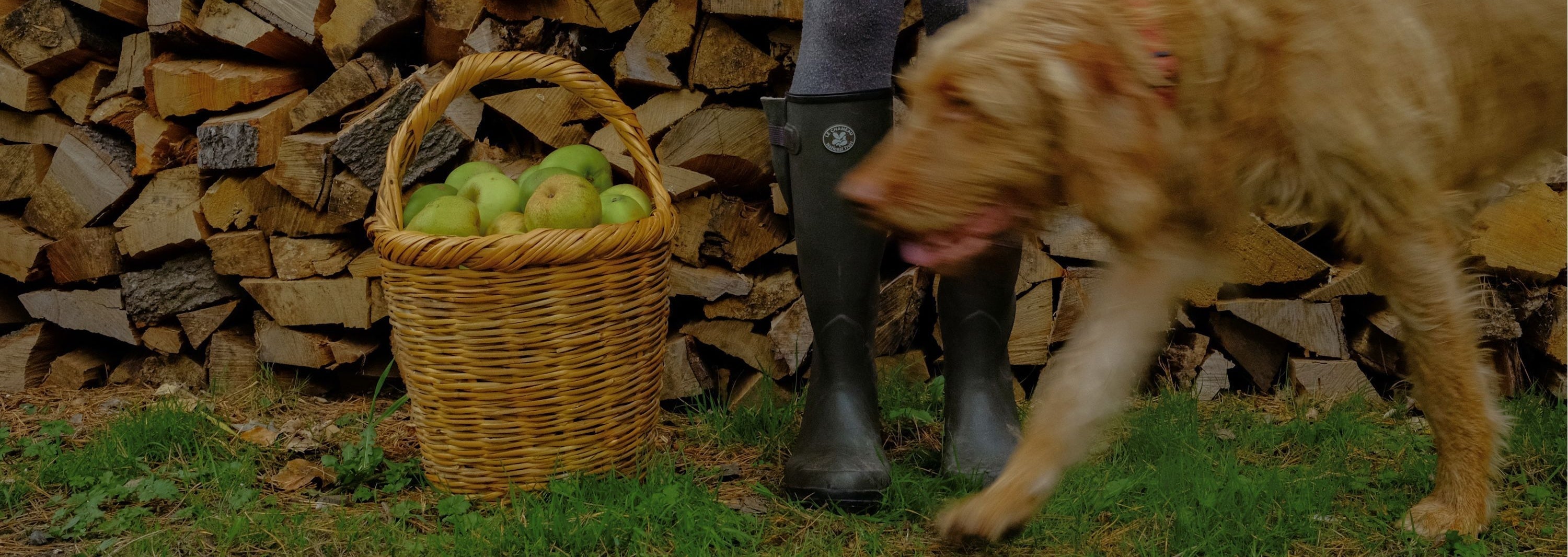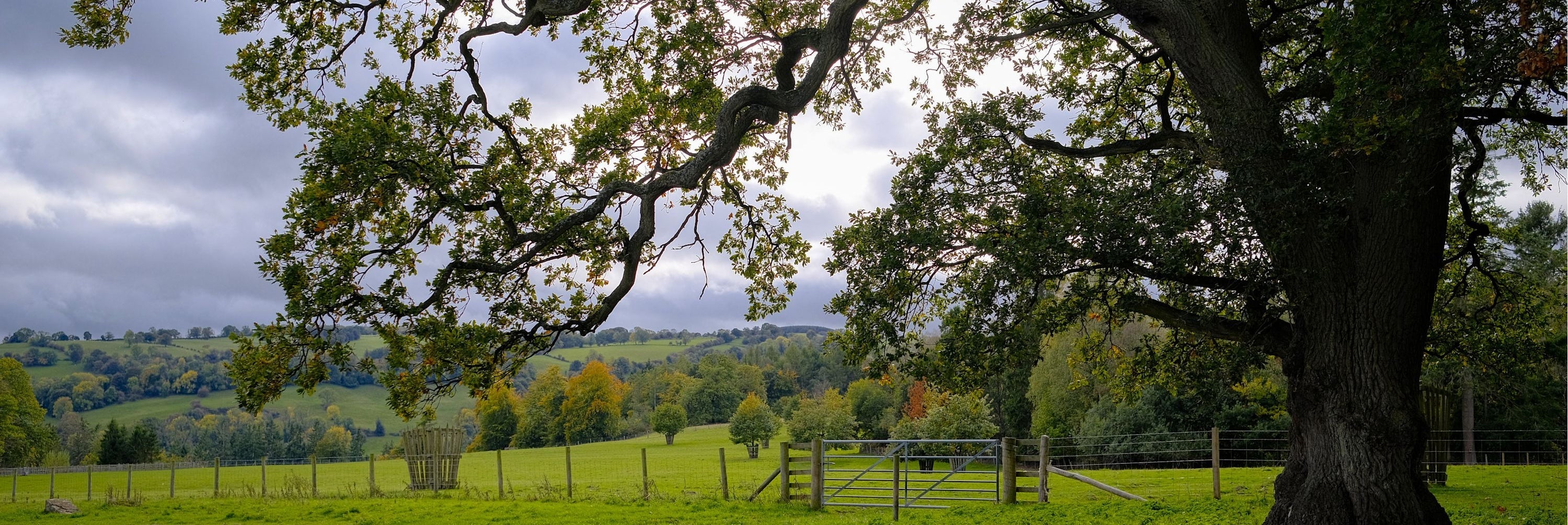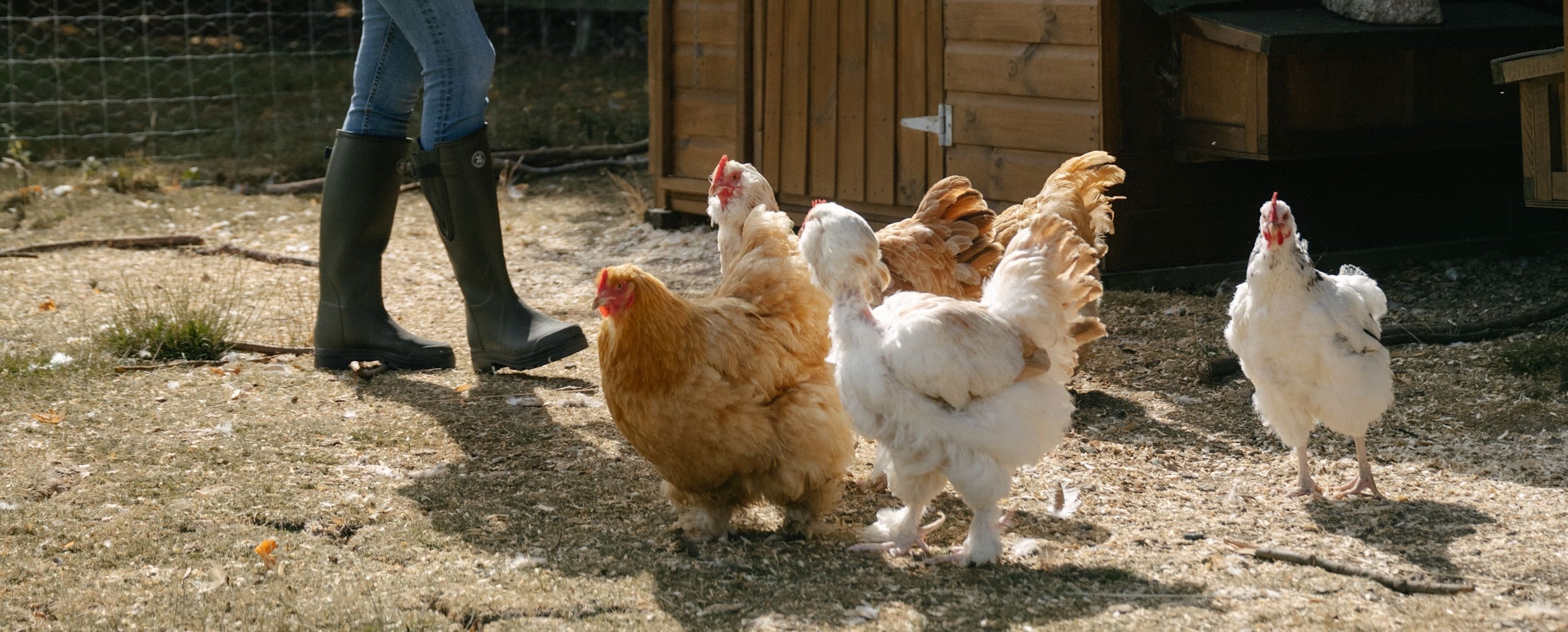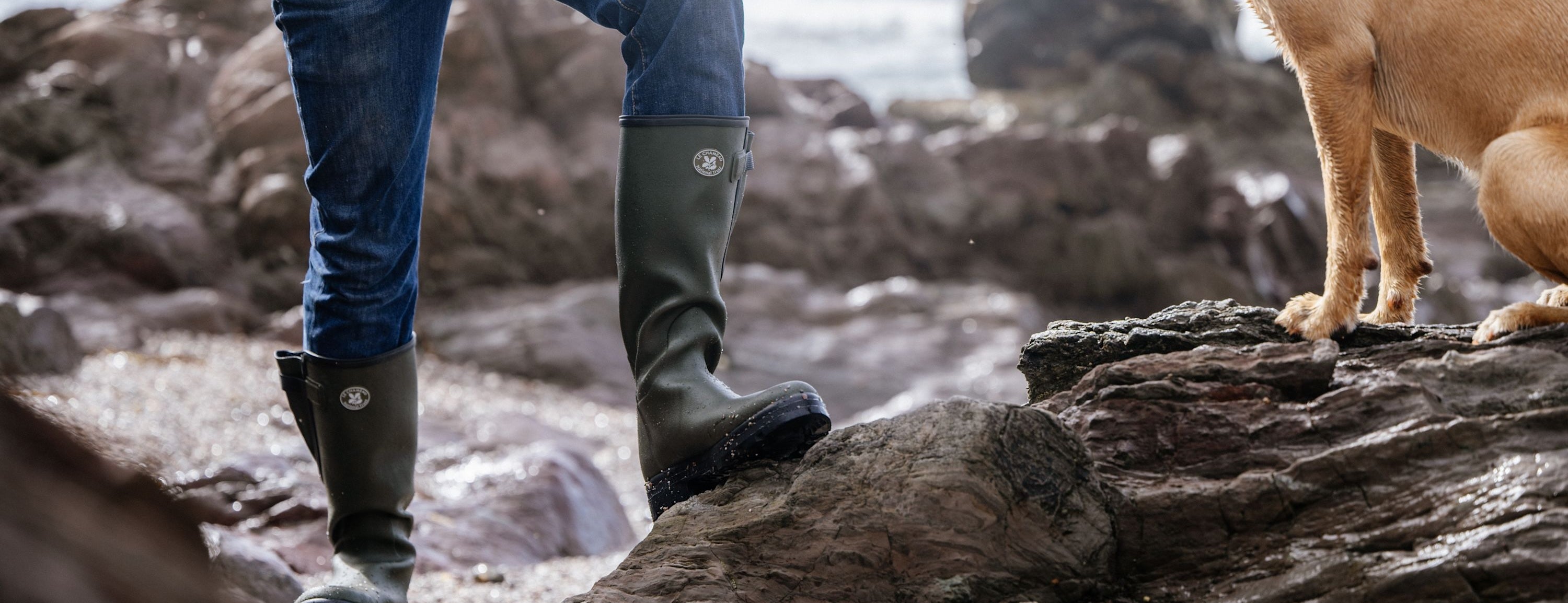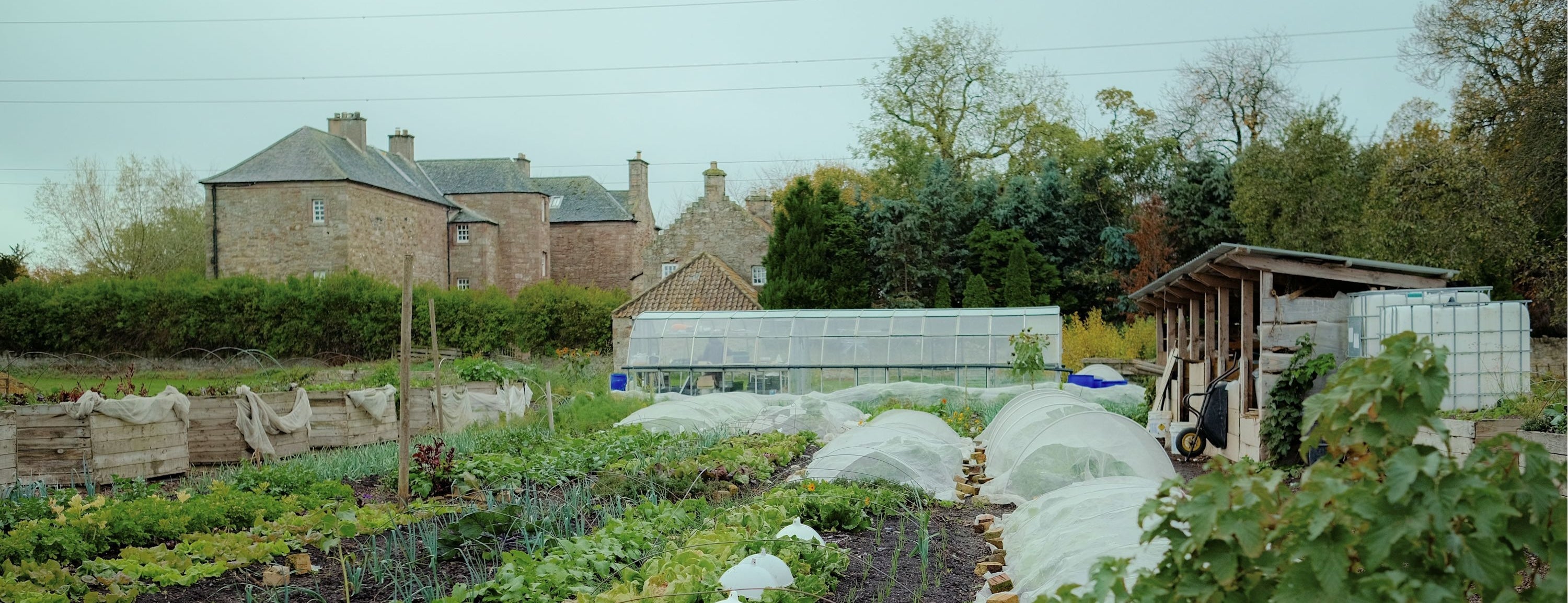
A ‘Farm to Fork’ Journey with l’escargot bleu
It’s early morning in the kitchen garden, the air is fresh, and the dawn chorus has broken. So early is it, that the morning dew still lingers on the outer leaves of the cabbages and towers of kale like glistening studded jewels. The only sound besides birdsong is the satisfying crunch of woodchip underfoot as Head Chef Fred Berkmiller – in his Le Chameau wellies – walks the length of his veg plot to see what’s ready to be picked for the evening’s service.


Le Chameau aligns with those whose values reflect our own; master craftsmanship, superior quality and traceability. One such impressive individual who aligns with these values is Fred Berkmiller, Owner and Head Chef at l’escargot bleu, an award-winning French restaurant and wine bar in Edinburgh.
Fred is a member of the Slow Food movement, he is a Maître Restaurateur and his restaurant is the first certified ‘Pasture for Life’ restaurant in the UK, selling only 100% pasture fed produce on the menu. Fred is also an avid Le Chameau wearer, as we’ll soon find out.
During a visit to Scotland, the Le Chameau team spent the day with Fred, visiting his kitchen garden on the outskirts of the city to find out what fruit and veg he grows for the restaurant’s menu and his restaurant in Edinburgh learning more about his passion for working with local producers – like Burnside Farm in the Scottish Borders. This is a true ‘farm to fork’ journey of discovery.


Fred, where did your journey into becoming a chef begin?
I grew up in the suburbs of Tours in the Loire Valley, some 200 miles south of Paris. How did I get into being a chef? Well, you could say that I fell into it when I was just 14 with my first pre-apprentice job in Sainte Maure de Touraine. School and I fell out, if you see what I mean, so I was placed into a kitchen at a very early age to learn the ropes of the industry. That was a long time ago, but it stood me in good stead, because when I was 18, starting as an apprentice in Tours, I had four years knowledge ahead of those around me who were just starting to cook. The more I cooked, the more confident I got and started to love cooking.
In my early twenties, I moved to London. There, I worked double shifts working for two restaurants, one in the morning and afternoon, then over to the next restaurant for the evening service. It was fun but full on, working under some incredible chefs. I then quickly started to I run my own kitchen managing a whole team.
Then in the 1990s, I worked for a company that travelled the UK a lot, so I worked as a chef in Bath, Bristol, Belfast, Chester and Shrewsbury, until I ended up in Glasgow, where my wife and I took over my first restaurant in the city for 3 years. Then after that, I moved to Edinburgh to set up as a family and l’escargot bleu restaurant opened in 2009, and so here we are, 16 or so years on.
It's clear you love to source local produce, why is that?
It was during the 1990s and early 2000s that there was a real transition in buying good food. It seemed the access to local produce in Scotland just opened up. Around that time, as a restaurant, we were starting to find some incredible producers local to us that weren’t there before. It was particularly in the mid-2000s when I started to be very aware of the quality of food we were able to source, talking directly to the producers and farmers. It was brilliant, they would tell us how they were feeding and rearing their animals, and we listened. It was a big learning process.
I am a consumer as well, so I understand what’s needed when you go to a restaurant. As a chef and restaurateur, I find it so special that our customers come to the restaurant as they believe and trust in us to serve them something exceptional and reliably delicious. They are giving us their money, so we have a duty of care to fulfil those expectations and give them the best time. It’s like Le Chameau, customers come to you as they know they’ll get the best comfort, reliability and waterproof Wellington boots – I should know, I have two pairs of Le Chameau Wellington boots and a pair of Le Chameau Explore boots!
What’s the ethos behind l’escargot bleu?
I've always been honest about my role in the kitchen and my general philosophy in food; it is about making customers happy with good seasonal food they will come back for again and again.
We are proud of the produce we serve at l’escargot bleu. We are certified ‘Pasture for Life’, which means that we have a close relationship with all our farmers who supply us with 100% pasture fed meat and dairy. We source rare breeds. We grow our own fruit and vegetables. We buy locally from the Borders to the Inner Hebrides,places like Mull, and we only buy what I believe to be the best quality.
I believe cooking for your customers is no different than cooking for your kids; you want to give them the best you can get. So, when you come here to l’escargot bleu, I hope you’ll love it and come again. That’s what we are doing here, creating a community, a family built around the love of good food.
You’ll also find here a sense of passion. A passion for the best in everything we do. I think we've had enough of ultra processed food producers and wholesalers providing kitchens with low quality produce. My belief is that not only will you enjoy the best ingredients available (Fred is a Maître Restaurateur which certifies those who cook entirely using fresh and seasonal produce), but you will also have an education of what’s good for you, learning what fruit and veg grows in which season, where the meat and dairy have come from. It’s the whole story for us.
How did you come to work with Burnside Farm?
As I mentioned earlier, it was in the mid 1990s when I started sourcing great, local produce. Johnny and Susie at Burnside Farm in the Scottish Borders were one such producer that I started working with – that was over thirty years ago now.
Since that time, I have been working closely with them. They supply us with the finest Scottish game like venison, partridge, grouse and pheasant. As much as I am passionate in the kitchen, they are equally as passionate and dedicated to supplying restaurants with the best ingredients. It’s a fantastic working relationship we have with them.
What's the food scene like in Scotland?
Over the many decades I’ve been here, I think we've got some really fabulous chefs, restaurants and producers in Scotland. I’ve seen how things have transitioned over a long time now, and I can say things are going in the right direction. What’s been most apparent in that time is the Scottish larder being a lot more accessible than it ever was, say 20 years ago. As a French restaurant, we used to buy most things from France like game and poultry, but that’s long gone. Now, we have a long list of superb producers available here in Scotland who are growing, rearing and catching produce for us to serve. Just take Johnny and Susie for example, you can ring them up direct and ask whatever
you want, they can get it.
How do your Le Chameau boots fit around your life?
For the last 8 to 9 years, I’ve been gardening and growing fresh fruit and vegetables for me, my family and the restaurant, and Le Chameau has been following me all this time.
We have a 1200-square-metre space on a farm just outside the city of Edinburgh, in Musselburgh, a few miles out from the restaurant, where we grow a huge variety of produce for the kitchen. The beauty of it is that we can grow whatever we want.
We also try and make it a complete cycle, from the restaurant to the garden, and back again. To that extent, we use a no-dig system in the garden, which means we build up from the ground with compost and woodchip to build organic matter and not dig into the soil. From the restaurant’s food waste last year alone, we recycled 7 tonnes of homemade compost for the garden.
During the establishment and maintaining of the plot, I’ve needed to have a pair of good boots that would withstand being outside a lot in the fierce Scottish weather, and as you know, being a good French man, you end up buying things with a French name, French heritage, so it had to be Le Chameau.
For us, growing our own produce for the restaurant, alongside souring the best meat and dairy, is what makes life special. Knowing that we can say to our customers, ‘We know where every ingredient on your plate has come from and how it has been produced. We picked the broad beans at 9.00am this morning and it’s on your plate in the afternoon, for example.’ Now that’s a true expression of ‘farm to fork’. It’s about taking them on a journey of discovery; simplicity at
its best.
Fred has shared one of his favourite recipes that celebrates the best of the season’s produce; his wild game bourguignon, using produce from Burnside Farm and his kitchen garden.


Enjoy the Seasonal Recipe: Fred’s Wild Game Bourguignon
Ingredients (Serves 3-4)
Meat:
Loin of venison
2 partridge breasts
1 Pheasant (frying the 2 breasts, whilst using the carcass and legs for stock)
Stock:
Using the pheasant carcass and legs
25 Vegetable sides:
½ Small pumpkin, in 1cm thick slices
½ Small butternut squash, in 1cm thick slices
3-4 Carrots, in thick slices
1 Small broccoli, roughly sliced
Larder essentials:
100-150g Butter
Sea salt
Black pepper
Method:
To prep, cut all your stock vegetables into thin slices and set aside. For the pheasant, remove the breasts (for frying) and set aside, you’ll be using the carcass and legs for the stock.
To make the stock, in a deep-frying pan on a medium heat, start off by frying the pheasant legs and rest of the carcass in a good knob of butter and a little olive oil until browned, stirring well, this should take a few minutes.
Add in the following stock ingredients – carrots, celery, fennel, onions, garlic, thyme, a pinch of salt – to the same pan and fry for a further few minutes until the vegetables have softened. A little more butter can be added at this stage, as Fred says, ‘butter is life’.
Once everything has a golden colour to it, you may find the ingredients sticking to the bottom of the pan a little. Don’t worry just keep stirring and add in your red wine, this is called deglazing. Allow the wine to ‘dry’ or evaporate, then add in the water. This will cook the pheasant meat left on the carcass and legs. Make sure to stir for 10 minutes or so until the stock is heavily reduced.
Once the stock has reduced to your likeness, sieve the stock through a colander and into a small saucepan to reduce further on a medium to low heat. Add in around 50g butter and season with sea salt and black pepper. Keep stirring on the heat to reduce the sauce further. A little flour can be used to thicken the sauce, or a drop of gluten-free arrowroot. Once the consistency of the sauce is right, set aside on a warm heat as you cook the meat.
In large shallow frying pan, fry the pheasant and partridge breasts and deer loin in a little oil and butter and garlic, cook for 3/4 minutes on each side, then leave to rest. Season with sea salt and black pepper.
Boil your broccoli for 5-10 minutes until cooked.
Whilst the broccoli is cooking, in a large shallow frying pan, fry the vegetables – pumpkin, butternut squash and or carrots – in a little butter and olive oil until soft. Brown on both sides for flavour. When the vegetables are done, you should be able to insert a knife easily into the flesh.
Assemble the meat and the vegetables and cover with your delicious sauce.
Garnish with fresh salad, and bon appétit!
